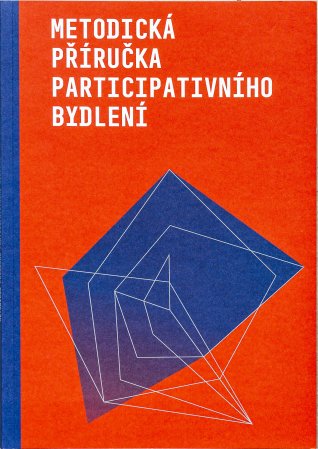Vybrané publikace
Všechny publikace
Autoři
Kohout, M.; Tichý, D.; Tomandl, J.; Kubcová, J.; Káňová, M.; Novotná, K.; Nádravská, J.
Publikováno v
Praha: CTU. Faculty of Architecture, 2025.
Rok
2025
Podkategorie
Sborník
Autoři
Malý Blažek, J.; Hoření Samec, T.; Houser, L.; Kubcová, J.; Tichý, D.; Káňová, M.; Vinklárková, A.; Orcígr, V. et al.
Publikováno v
[Research Report] 2023.
Rok
2023
Podkategorie
Výzkumná zpráva
Související lidé
Anotace
Dokument poskytuje doporučení pro šest partnerských obcí projektu ve vztahu k participativnímu bydlení. První část výsledku zahrnuje obecná doporučení pro obce, druhá část zahrnuje doporučení ve vztahu ke konkrétním situacím a lokalitám v jednotlivých partnerských obcích.

Autoři
Malý Blažek, J.; Kubcová, J.; Hoření Samec, T.; Vinklárková, A.; Houser, L.; Káňová, M.; Kubala, P.; Orcígr, V. et al.
Publikováno v
Brno: Masarykova univerzita, 2023. ISBN 978-80-280-0476-7.
Rok
2023
Podkategorie
Kniha
Související lidé
Anotace
Participativní bydlení znamená, že na přípravě projektu bydlení nebo jeho části, na investici, případně na správě bydlení spolupracují obyvatelé. Cílem manuálu je pomoci obyvatelům realizovat ve spolupráci s dalšími domácnostmi projekt participativního bydlení.

Autoři
Malý Blažek, J.; Kubcová, J.; Hoření Samec, T.; Vinklárková, A.; Houser, L.; Káňová, M.; Kubala, P.; Orcígr, V. et al.
Publikováno v
Brno: Masarykova univerzita, 2023. ISBN 978-80-280-0478-1.
Rok
2023
Podkategorie
Kniha
Související lidé
Anotace
Participativní bydlení znamená, že na přípravě projektu bydlení nebo jeho části, na investici, případně na správě bydlení spolupracují obyvatelé. Cílem metodiky je představit možnosti, jak mohou obce podporovat a rozvíjet participativní bydlení a diskutovat limity, které s tímto přístupem souvisí.
Autoři
Orcígr, V.; Kubala, P.; Malý Blažek, J.; Hoření Samec, T.; Kubcová, J.; Káňová, M.; Tichý, D.; Kohout, M. et al.
Publikováno v
[Research Report] Brno: Masarykova univerzita, 2023.
Rok
2023
Podkategorie
Výzkumná zpráva
Související lidé
Anotace
Výzkumná zpráva přináší shrnutí tříletého výzkumu o možnostech a limitech participativního bydlení v ČR. V první části představujeme konceptualizaci participativního bydlení vycházejí z analýzy zahraniční situace, historického kontextu a institucionálního zázemí v Česku. V druhé části přinášíme výsledky terénního výzkumu – analýzy dat z výzkumných workshopů v partnerských městech a také z explorativního dotazníku. Přinášíme zjištění ohledně preferencí obyvatel v otázkách participace, důvěry v realizaci projektů participativního bydlení, otázek financování, správy, překážek či výzev. V závěrečné části shrnujeme, jaké možnosti a limity participativního bydlení vyplývají ze spolupráce obyvatel s městy.
Autoři
Hoření Samec, T.; Malý Blažek, J.; Kohout, M.; Kubcová, J.; Tichý, D.; Houser, L.; Kubala, P.; Orcígr, V. et al.
Publikováno v
[Research Report] 2023.
Rok
2023
Podkategorie
Výzkumná zpráva
Související lidé
Anotace
Policy paper prezentuje návrh systémových řešení rozvoje participativního bydlení v ČR. Obsahuje identifikované výzvy rozvoje participativního bydlení a také doporučení k jejich překonání. Diskutovány jsou otázky rozvoje kapacit, důvěry mezi aktéry, veřejné podpory, právních forem a financování ve vztahu k participativnímu bydlení.
Autoři
Kubala, P.; Malý Blažek, J.; Orcígr, V.; Hoření Samec, T.; Káňová, M.; Tichý, D.; Kubcová, J.
Publikováno v
Critical Housing Analysis. 2023, 10(1), 39-49. ISSN 2336-2839.
Rok
2023
Podkategorie
Článek
Související lidé
Anotace
This paper explores the sociotechnical change necessary for the introduction of collaborative housing projects into the Czech super-homeownership housing regime. To better understand the obduracy of the current housing system, we examine the major barriers and threats to the implementation of such projects through a series of workshops with non-experts in selected cities. Our findings suggest that the housing system’s obduracy is related to social imaginaries that we conceptualise as the ‘imaginary of social inertia’. This form of imaginary, along with other factors such as a lack of supporting legal and financial infrastructures, creates a complex network of obstacles that reduce the likelihood of such housing projects gaining ground. In conclusion, our research emphasises the role of imaginaries in studying obduracy and thus provides valuable insights into the processes of urban sociotechnical change.
Autoři
Mika, J.; Káňová, M.
Publikováno v
In: Urban Planning & Architectural Design for Sustainable Development (UPADSD) 7th Edition 2022 - A Book Of Abstracts. Mannheim: IEREK GmbH, 2022.
Rok
2022
Podkategorie
Abstrakt ve sborníku
Související lidé
Anotace
As part of the research on the impact of urban depopulation on different types of urban structures, this paper focuses on one of the common types of urban development in Central Europe: post-war housing estates of solitary apartment buildings. The basic premise of the research is that the reduction of pressure on the territory caused by the population decline (the phenomenon of "shrinking cities") makes it possible to saturate some inherent deficits of these urban structures that are difficult to address in the situation of "normal" growing cities. Several reference neighborhoods of post-war settlements are selected, we collect their analytical data and monitor their change in relation to shrinkage. The variables monitored for the data analysis are a) spatial (public space and urban composition, hierarchy of privacy levels of public spaces), b) cultural (historical value, symbolic meaning), c) functional (diversity of functions, availability of amenities, capacity of technical and transport infrastructure), d) demographic (population density). The data obtained on the urban districts affected by shrinkage are confronted with the inherent deficits of each type of structure defined in the existing literature. On this basis, the possibilities of using shrinkage (a form of quantitative
decline) to qualitatively grow post-war solitary urban structures are proposed. It seems possible to enrich the spectrum of public space types (reduced in this period of development compared to previous periods), to enrich the possibilities of housing types, to enrich the functional structure or to reflect the change in the need for transport infrastructure capacity due to lower population density.

